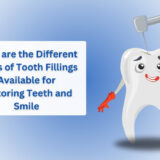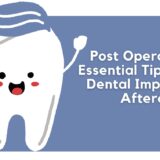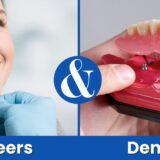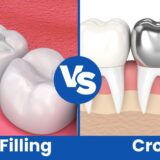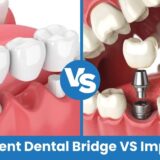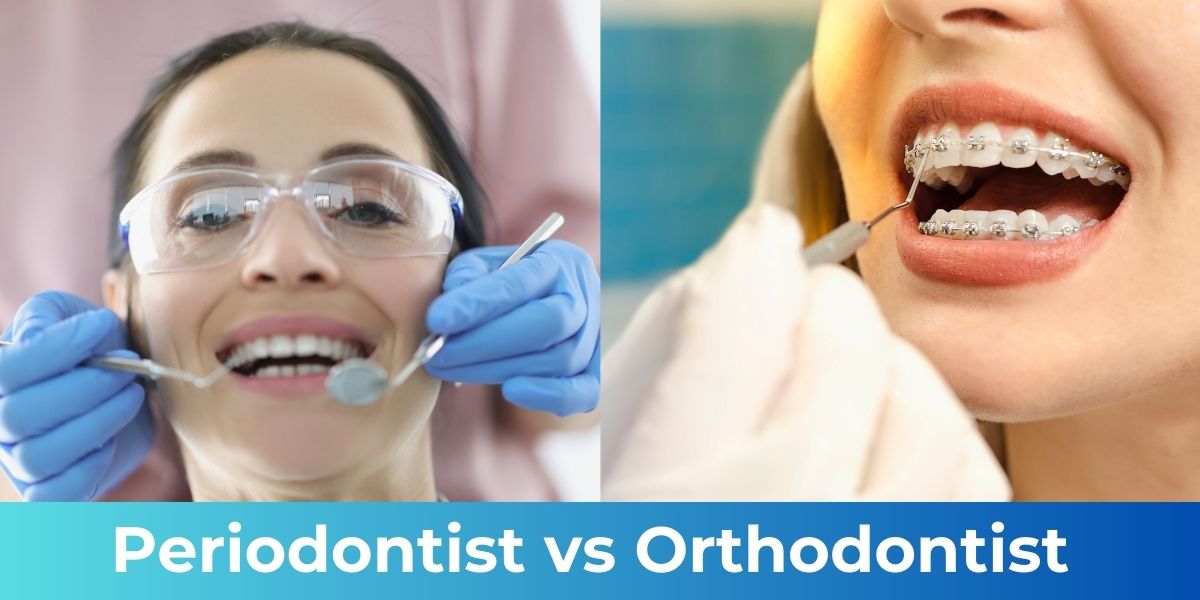It is commonly observed that an individual may overlook their oral health and may attribute their slightly less severe discomfort to factors like their usual brushing or make changes in their routine care. Still, actually, these discomforts may show up as signs for you to seek a dentist’s care. Those signs may have been gradually developing in a specific area of your teeth or gums, that’s when you should plan to visit an expert dentist.
There exist different sub-classifications of dentists as per their specialization, in this blog, we’ll explore different types of dentists, starting with ‘general dentistry’ and moving on to what is a ‘periodontist’ and an ‘orthodontist’ as well as see the difference under periodontist vs orthodontist and, outlining their specific areas of expertise and treatments.
What is General Dentistry?
Under oral healthcare, general dentistry is a broader specialization that aims at the early detection and treatment of an array of dental diseases. General dentistry practitioners are entrusted with performing regular examinations to gauge patients’ overall dental health. This entails identifying and diagnosing any problems such as dental cavities, gum disease, and oral infections.
General dentists may conduct routine checkups and integrate preventive measures such as eliminating ground-level plaque and tartar to reduce the risk of dental issues. They offer basic dental care, like cavity fillings, additionally providing guidance on oral hygiene, help establish long-term dental health habits. Additionally, they may conduct extractions, administer local anesthetic, and offer dietary advice impacting oral health.
The following sections will introduce specialized dentistry fields namely orthodontist and periodontist.
What is Orthodontist?
As trained in dentistry, orthodontists attempt to correct misaligned teeth and jaws. Having had their fundamental training in general dentistry, they are qualified to diagnose and treat a broad spectrum of conditions concerning to the teeth, gums, tongue, and mouth, which applies their skill set on level with that of dentists.
They undergo a three years of specialized training that qualifies them as orthodontists. The purpose of this in-depth training is to extend their ability to identify and correct alignment issues in the jaws and teeth. In particular, they are skilled in treating crowded, overlapping, or crooked teeth in addition to misaligned teeth resulting from irregular bites.
Treatments provided by an orthodontist:-
Diagnosing and Treating Malocclusion:
Identifying and addressing misalignments of teeth and jaws, known as malocclusion.
Creating Dental Straightening Treatment Plans:
putting together thorough strategies for teeth straightening that include recommending and setting up different dental appliances. These can include the installation of retainers, as well as a variety of modern choices like AcceleDent, Symetri Clear Braces, Damon braces, Incognito braces, Invisalign, and metal braces.
Monitoring Children’s Facial Development:
observing and shaping, particularly in young children, the development of facial features, such as the bite and jawline. Proper alignment and progress are ensured using this proactive approach.
Performing surgical procedures for teeth straightening:
carrying out operations and surgical techniques targeted at attaining proper tooth alignment. Corrective surgery may be necessary to treat complex malocclusions or other issues preventing the teeth from aligning properly.
What is Periodontist?
They are dentists who specialize in treating, diagnosing, and preventing gum diseases such as gingivitis and periodontitis. Their training encompasses treating more complex gum problems, like cavity formation and gum inflammation, in an attempt to maintain a healthy gum line, lessen unease and minimize sensitivity. Periodontal/gums dissease treatment and operating on the supporting bones around teeth is the sole area of expertise for them. These experienced professionals dentists provide a range of diagnostic, non-surgical, and surgical procedures to improve dental health and aesthetics. They also detect and treat conditions affecting the soft tissues and bones that support teeth.
Treatments provided by a periodontis:-
Scaling and root planing: Non-surgical techniques employed to clear out tartar and plaque that are under the gum line and enhance gum health.
Gum Grafts: surgical interventions that restore the general structure and look by implanting gum tissue in regions with receding or inadequate gums.
Laser treatments: These involve meticulously addressing particular periodontal disorders with laser technology, which tend to speeds up recovery and lessens discomfort.
Regenerative Techniques for Bone and Tissue Growth: Treatments designed for fostering the growth of new bone and soft tissue in order to improve and repair the supporting tissues surrounding the teeth.
Dental Crown Lengthening: Operations carried out for aesthetic or functional purposes that expose a larger portion of the tooth’s surface.
Periodontist vs Orthodontist
Major difference between periodontist and orthodontist lies in their respective areas of intervention and treatment in a wide spectrum of oral health.
- A periodontist may treat problems associated with gums, supporting tissues and bones while an orthodontist will treat problems associated with misaligned teeth and shaping of jaw.
- Both the dentists start with training in general dentistry but diverge in their specialization fields with an extensive training for over 3 years.
- If an orthodontist observes signs like swollen or bleeding gums, bad breath, or a receding gum line, you may be referred to a periodontist, also for a case when there’s a risk of tooth loss due to gum problems.
- This shows that both may collaborate to deliver an optimal oral care to the patient.
- A periodontists may use surgical and non-surgical techniques for preventive and corrective care in patients of all ages, in contrast, an orthodontists focus on corrective oral care predominantly in children and adolescents using devices like braces and aligners, which may extend the treatment duration.
Conclusion:
An individual seeking oral healthcare may hesitate at first but they can be assisted via general dentistry to specialized dentists; periodontist and orthodontist in circumstances of personalized and specific treatment concerning the problem either in teeth or gums. As per the severity, both the dentists may work together in overlapping interventions.

